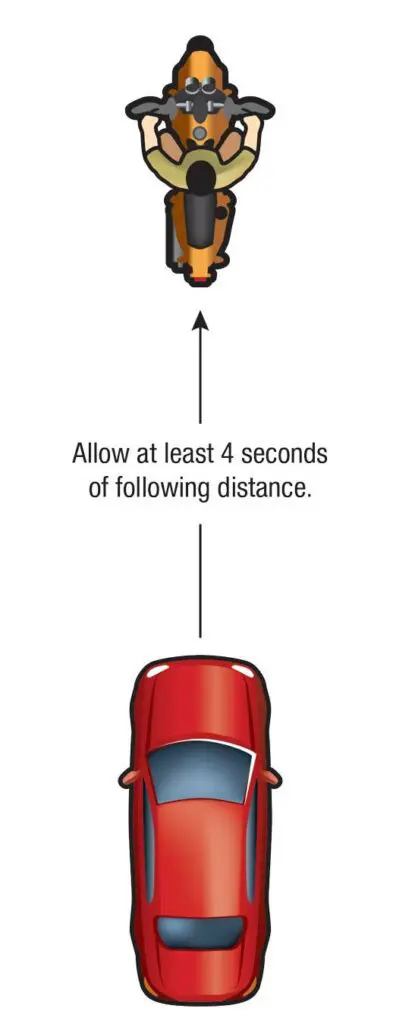How to Save a Life
By MR. GARY ELL, STAFF WRITER
MOTORCYCLE SAFETY TIPS FOR CAR DRIVERS
More than one-half of all fatal motorcycle crashes involve another vehicle. Most of the time, the car or truck driver, not the motorcyclist, is at fault. There are many more cars and trucks than motorcycles on the road, and some drivers do not “recognize†a motorcycle—they ignore it (usually unintentionally). Motorcycles are the smallest vehicle on the road, which means they are the hardest to see. Because of their size, they seem to be traveling faster than they are, so it can be difficult to spot motorcycles and gauge how far they are from our cars. When a motorcycle accident does happen, it is always serious because motorcyclists do not have the protection that a car provides. There is nothing separating motorcyclists from the road or contact with your vehicle. When it comes to motorcycles, there is no such thing as a fender bender. That is why it is so important to remember these safety tips for sharing the road.
1. BEWARE OF YOUR BLIND SPOTS
Motorcycles are smaller than cars, so they can be doubly as difficult to see when turning or switching lanes. Be sure to make a visual check as well as use your mirrors when turning or merging. Because of its narrow profile, a motorcycle can be easily hidden in a car’s blind spots or camouflaged by objects or backgrounds outside a car, such as bushes, fences, or bridges. Take an extra moment to look for motorcycles, whether you are changing lanes or turning at intersections. Because of its small size, a motorcycle may look farther away than it is. It may also be difficult to judge a motorcycle’s speed. When checking traffic to turn at an intersection or into (or out of) a driveway, predict a motorcycle is closer than it looks. To avoid accidents, always look in your rearview and side mirrors and quickly check your blind spots before changing lanes or turning.
2. SLOW DOWN BEHIND MOTORCYCLES
Motorcycles do not handle the road the same way as cars and can be much more sensitive to changes on the road. Motorcycles can also maneuver much faster than cars can, so slow your roll to make sure you have time to react. Motorcyclists often slow by downshifting or merely rolling off the throttle, thus not activating the brake light. Therefore, allow at least 3 or 4 seconds more following distance when you are behind a motorcycle. To calculate this distance, find an object up ahead, like a tree. Start counting when the motorcycle passes the tree, and make sure you do not pass it until at least 4 seconds later. At intersections, predict a motorcyclist may slow down without visual warning.
3. DO NOT TAILGATE
Leaving room between you and a motorcycle in front of you is essential to help prevent accidents. Giving yourself room will give you time and space to react if the motorcyclist makes a quick, unexpected turn. Stopping distance for motorcycles is nearly the same as for cars, but slippery pavement makes stopping quickly difficult. Allow more following distance behind a motorcycle because you cannot always stop “on a dime.â€
4. USE YOUR TURN SIGNALS
Most motorcyclists are cautious and responsible drivers because they have very little between themselves and the road. As a result, bikers tend to drive defensively. Because they have to adjust their riding behavior on the basis of what you do, always signal your intentions. Regardless of whether motorcycles are on the road or not, you should always use your turn signals to help others on the road anticipate your next move. Turn signals on a motorcycle usually are not self-canceling; thus, some riders (especially beginners) sometimes forget to turn them off after a turn or lane change.
5. BE CAREFUL WHEN PASSING
If you need to pass a motorcyclist, signal first, then plan your move. Long before you approach the bike, move over to the next lane and stay in that lane until long after you have passed. Be sure to avoid having the biker in your blind spot.

6. BE CAREFUL TAKING LEFT TURNS
With any turn, be aware of motorcycles on the road and how fast they are going if you are turning. Left turns can be particularly dangerous due to your blind spots.
7. WEATHER CONDITIONS. LOOK OUT FOR RAIN
Bad weather has more drastic effects on motorcycle riders than it does on automobile drivers. Rain, in particular, can make it nearly impossible for a motorcyclist to continue to travel. Windy conditions can make it difficult for motorcyclists to control their vehicles on the road. Also, remember that weather conditions often reduce your visibility, and it may be more difficult to see motorcycles. When it is raining, know that bikers are most likely having some trouble. Riding in the rain can be scary and dangerous, so they try very hard to stay focused and upright. Be respectful of this situation. You are protected from the rain, so take your time and give motorcyclists plenty of space. Do not crowd them or get frustrated if they are traveling at a slower speed.
JUST BE NICE
Motorcyclists often have to change positions within a lane to be seen and to avoid road debris, passing vehicles, and strong winds. Understand they are driving this way for a reason and are not being reckless or showing off. Remember to be friendly and courteous, and share the road; motorcyclists have every right to be there. Even when a motorcycle is zooming past, please keep in mind that there is a human riding it, and we want everyone to get home safely.

